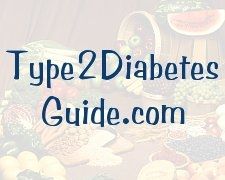Diabetes & Salt - How to Lower Salt Intake
Our bodies retain water when we consume salt. All of this extra water in the body raises blood pressure. Basically, the more salt we eat, the higher our blood pressure tends to be. As a diabetic, avoiding excess salt is necessary because you are already at increased risk for high blood pressure.
What's the big deal with high blood pressure? It's easy to think that it's not that important especially since there often aren't any symptoms. However, untreated hypertension can lead to strokes, heart attacks, kidney damage, and artery damage.
Of course, you won't be able to completely avoid salt. It's found in foods everywhere, including packaged foods and restaurants. Here are a few ways to cut down on your salt intake:
- Don't add extra salt at the table. Leave the salt shaker in the cupboard!
- Substitute other spices for salt. Fresh herbs, garlic or garlic powder, lemon juice, and salt-free seasoning blends are all examples of ways you can season your cooking without adding salt.
- Like to bake? Salt can be significantly reduced or even eliminated from most recipes.
- Avoid or minimize the use of soy sauce and other salty condiments like ketchup or mustard. They items tend to contain a lot of salt. If you really love them, look for low-sodium versions and use them sparingly.
- Avoid or minimize the consumption of lunch meats, canned soups, packaged or processed meals, packaged gravy mixes, etc. All of these usually contain a lot of salt. Opt for fresh foods over packaged ones.
- Prepare fresh meals when you can. This way, you'll be in control of how
much salt is used in the preparation. Instead of using salty rubs or marinades,
try using fruit juice instead to prepare meats and fish. Look for
cookbooks
of diabetic recipes to give you inspiration.
- Avoid smoked meats and fish.
- Avoid salty snacks like pickles, potato chips, pretzels, etc. Instead, snack on healthier 'chips' by baking thinly-sliced veggies like zucchini, beets, or parsnips, seasoned with herbs or spices. Kale, a wonderfully nutritious green leafy veggie, is wonderful when crisped up in the oven.
- When eating at a restaurant, pass over the soups and chowders and opt for fresh salads (dressing on the side and used sparingly) and baked, grilled, or broiled lean meats. Try to avoid dishes with sauces and gravies, or use them sparingly. Ask if your meal can be prepared with less or no salt. Try to avoid buffets where foods can't be prepared with less salt.
- Give it time. At first, you may find it hard to eat food with little or no salt. But after a while you will adjust.
A healthy & balanced diabetes-friendly diet is an important part of an overall diabetes treatment plan.
Remember to monitor your blood pressure regularly. Keep a log of your blood
pressure readings so that you know if it's increasing.
Home blood pressure monitors
are available for purchase, so that you don't have to keep going out
to get your blood pressure checked. Diabetes & salt aren't a good combination --
the increased risk for developing high blood pressure makes it well worth
the effort to minimize salt intake.
What Causes Diabetes?
Insulin Resistance
Signs of Diabetes
Hypoglycemia
Hyperglycemia
Glycemic Index
Diabetic Recipes
Feline Diabetes
Diabetes Diet Sheet
How to Control Diabetes Without Medication
What Foods Have a Low Glycemic Index?
Conversion Chart for Blood Sugar Levels




